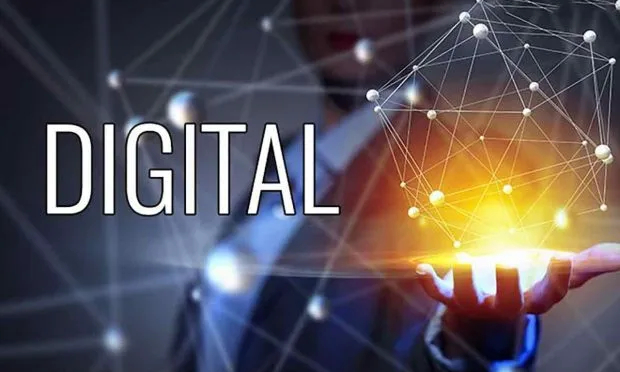Introduction: A Silent Superpower on the Rise
By the middle of 2025, the image of India in the world is being transformed quite significantly. Not with wars or aggression in its foreign policy but through its subtle, many-sided growth of soft power- India is becoming a role model of global influence in the 21st century.

The source of soft power, which is attraction and co-option instead of coercion, has become the most daunting foreign policy instrument of India. Beginning with a historic civilizational identity and moving up to advanced digital infrastructure of public domains, India is developing a discourse that attracts governments, international users and investors.
The present article discusses the soft power approach of India in 2025 via the six major lenses like cultural diplomacy, export of technology, diaspora networks, education, global leadership and challenges ahead. With methodical policy support and foreign confirmation, the Indian soft power is transforming into a representation of symbolic heritage to state-based strategy.
1. The Strategic Architecture: India Influence Framework (IIF)
The growth of Indian soft power is finally institutionalized with the India Influence Framework (IIF), a partnership platform introduced in early 2025 as part of the Ministry of External Affairs. As it is aligned with the ministries of Culture, Education, Electronics & IT, and AYUSH, the IIF is consistent in funding and its diplomatic support in missions.
Main objectives of IIF:
- Increase India cultural and language outreach in more than 150 countries
- Digitize and export the Indian digital spine of governance (India Stack)
- Establish Diaspora led development councils
- Intensify the traditional knowledge diplomacy (AYUSH, Vedas, Buddhist circuits)
Budget & Performance:
In the 2025-26 budget, 7,600 crore was allocated to international cultural interaction, a 45 percent raise over 2022. In April 2025, a new Performance Tracking Dashboard was launched that tracks cultural events and education exchanges as well as the results of soft diplomacy in real-time.
As opposed to Confucius Institutes in China or liberal soft power of the U.S. developed as an entertainment, India has civilizational magnetism, non colonial, pluralistic attraction.
2. Culture as Currency: Yoga, Languages, and Cinema
2.1 Yoga: India’s Global Peace Offering
Yoga is the most well-known export of India. In June 2021, the International Yoga Day (June 21) was represented in 205 countries with Prime Minister himself gluing 1.1 million online and physical practitioners across New York to the other side of the globe at Nairobi.
In 2025, India proposed a new program called the introduction of the Yoga + Ecology program, which combines ecological safety with the principles of mindfulness. Swedish and Kenyan pilots are specializing in yoga as a stress-reduction practice among climate campaigners and health care providers.
Quantitative Reach (2025):
- There are 91 foreign universities that have yoga degree/ diploma programs
- Yoga has been introduced in the physical education in 43 countries in the field of public schools
- 1,250 yoga teachers certified by AYUSH sent all over the world on MEA fellowships
Impact Insight:
India stood at # 3 at global level in the health and wellness soft power according to the Soft Power 30 Index (2025), behind South Korea and France.
2.2 Indian Languages and Literature Abroad
The ICCR scheme of establishing Language for Diplomacy centres has enabled the opening of Indian language facilities in 55 new international universities alone this year. Today, Bhojpuri is being taught in the Caribbean, Malayalam in Bahrain and there are even Urdu poetry clubs in Germany and Argentina.
Translation Boom:
The larger impact of the “Sahitya Beyond Borders” project is the translation of more than 600 Indian literary texts- including tribal, Dalit, feminist, and regional literary voices-into Spanish, Korean, Swahili, and French.
According to new MEA (June 2025) figures, the number of people studying Indian language courses in Europe and Latin America has increased by 65 per cent since 2023.
2.3 Cinema: Beyond Bollywood
In 2025, Indian cinema has received a global critical success:
- The UNESCO Award at Cannes was given to Ladakhi-language film Adhvaan, which deals with Himalayan geopolitics.
- In Southeast Asia, Tamil and Malayalam movies rule Netflix especially in Malaysia, Indonesia and Philippines.
To promote Indian regional cinema, subsidize screenings, and organize crossover film festivals, the Ministry of Information and Broadcasting in India established Film Diplomacy Units in Paris, Nairobi, and Seoul.
The online streaming service providers such as Netflix and Amazon had collaborated with Doordarshan Archives to re-release classic films of India with revamped versions worldwide, providing continuity to the forgotten stories and adding to the passage of non-obtrusive doting.
3. Techno-Diplomacy: India’s Soft Power Through Code
3.1 Digital Public Infrastructure: The New Export
The example of India Stack (UPI, Aadhaar, DigiLocker, CoWIN, ONDC) in India is being proposed as a Digital Public Good as part of the Tech Equity Pact by India in the G20.

As August 2025:
- Memoranda of Cooperation have been signed by 22 countries to adapt India Stack.
- UPI currently exists in UAE, France, Singapore, Nepal and Mauritius.
- Kenya and Fiji have adopted the open model e-commerce used in India under the ONDC.
- Digital India Global Centre (DIGC) has emerged within the city of Nairobi, as a center of technology training, cybersecurity education and fintech innovation within the East African region.
Case Insight:
Philippines has announced the launch in June 2025 of a real-time payments system, PH-ePay, built on UPI architecture with Indian technical and consulting assistance.
The goal of the DPI Mission in India is to touch 100 countries by 2030.
3.2 IndiaAI & Bhashini: Inclusive AI for the Global South
The Bhashini AI platform in India supports 22 Indian languages with low-resource African and Southeast Asian languages being supported through the Global Language Tech Partnership.
In 2025 Key Projects:
- AI4Agri: Employing the Indian-trained AI to anticipate crop failures in Ethiopia and Cambodia
- EduSamvaad: Bhashini powered voice teachers in Anganwadis and Kenya schools
- Policy Collaboration: India is a co-chair in G20 Task Force on Responsible AI and AI in Public Services
According to the World AI Index 2025, India is now in the Top 5 in the world when it comes to the field of AI ethics governance
3.3 Space Soft Power
India’s space diplomacy scaled a new high in the year. ISRO launched:
- MaitriSat: An international Earth-observing satellite co-established with African Union
- StartupSat-5; Satellites manufactured by Indian private firms deployed to Pacific Islands and Argentina
- Women-in-Space Fellowship: Women from 12 countries learning satellite tech in Bengaluru
India’s partnership with NASA, CNES (France), and JAXA (Japan) is now having joint R&D on space weather resilience and climate monitoring.
4. Diaspora as Diplomatic Capital
4.1 Political / Economic Muscle
India has an informal arm of diplomats of 35+ million strong Indian diaspora. By 2025:
- There are 27 high powered leaders of Indian origin in the world today.
- India receives remittances of $126 billion a year.
The continued growth of Indian firms overseas has made it possible to bring in well over 14 billion dollars of overseas funds in just 2024 -25 by Indian immigrants in foreign countries.
4.2 Diaspora-Led Development
The Pravasi Mission 2040 by the government enables the diaspora councils to head infrastructure and education alliances. The latest works are:
- The skill IndiaAfrica Exchange sponsored by NRIs in Kenya
- Indo-Pacific StartUp Network in India with Australian/ASEAN in Business
- Fiji and Suriname Jan Seva Clinics providing AYUSH services and run by diaspora medics
A new Global Indian Ambassadors Program, launched in India, officially acknowledges diaspora patrons in media, law, science and arts.
5. Educational and Knowledge Diplomacy
5.1 NEP 2020 in the international setting
By mid-2025:
- India has experienced 24 universities that have opened international schools.
- Over 5,000 foreign students have been enrolled in KIT Delhi-Zanzibar, KIT Nairobi, and KIT Singapore in IIT IISc (Nairobi) and KIT IIM (Singapore).
- Africa and Central Asia are among the largest sources of exchange students in India forming 37 percent.
India also has real-time visa tracking and course selection with the support of the Study in India portal which is a part of soft academic diplomacy.
5.2 Indian Knowledge systems: Rigor of revival
Vedic philosophy, Buddhist ethics and Nyaya logic have become parts of research curricula of the Bharatiya Gyan Curriculum (BGC).
International recognition:
- Harvard Divinity School began a certificate in Indian Ethical Systems
- Kyoto university will cooperate with Banaras Hindu University in Ancient Science & AI Research
The curriculum has been set as a solution between traditional knowledge and contemporary practice similar to the rich intellectual capital of India.
6. Global Engagement: Voice of the Global South
6.1 Thought Leadership in the Global South
The Digital Sovereignty Fund, of which India pledged to provide $1 billion of funding for low-income countries to access public digital goods, came about due to Indian leadership in the Voice of Global South Summit (June 2025).
India has also given the lead on vaccine equity discussions providing patent-free COVID and malaria shots to 22 countries with the production being aided by the India biotech industry.
6.2 Mediation and Multilateralism
In more and more foreign conflicts, India is becoming an impartial arbitrator:
- Mediated ceasefire negotiations between Ethiopia and Egypt
- Redacted a shared climate policy paragraph at the G20 Bali+1 Summit
- Introduced the UN Peace Literacy Framework, and drew upon Gandhi nonviolence
India has kept up reform efforts in the UNSC which are supported by Brazil, Japan and South Africa. In May 2025, a regional cooperation platform was rolled out as the Indo-African Council on Peace and Development.
7. Challenges and Critical Reflections
Although it gazes in that direction, India has some actual issues in its soft power journey:
- Democratic Backsliding: The issue of concern about press freedom and dissent remains a damaging impact on the perception of India in particular by at least the Western academic and media community.
- Majoritarianism in Culture: The homogenizing process promoted in the name of national identity can hurt the multiculturalism that is the real strength of India.
- Risks of Over-commercialization: Cultural certification of international yoga centres is becoming common in order to fight against dilution/commodification.
Policy Responses:
- To espouse cultural diversity of places, India has introduced the Pluralism Index as an identity internationally
- In Delhi a global yoga certification council is being set up
- Media training has been sponsored through the MEA to support balanced narratives in the world
Soft Power as Strategic National Asset
By 2025, India will no longer be exporting traditions nor selling its tech, it will be sculpting narratives, creating institutions, designing systems that are trusted, emulated, and adopted by other nations.
Soft power is now no longer representative. It is tactical.
India has long been known to the world either through Sanskrit-powered AI systems, quantum collaborations, diaspora diplomacy, and ancient wellness practices, among others itself is deeply embedded and very much intentioned.
Should India succeed in preserving its democratic ideals and still be able to achieve some cultural humility and technological generosity, its soft power can very well become the most lasting source of its global power in the decades ahead.










